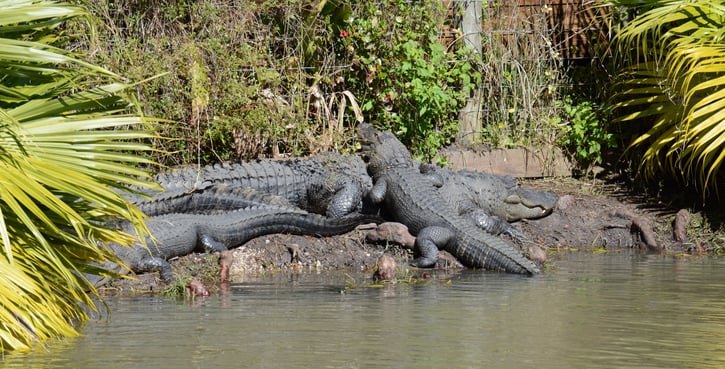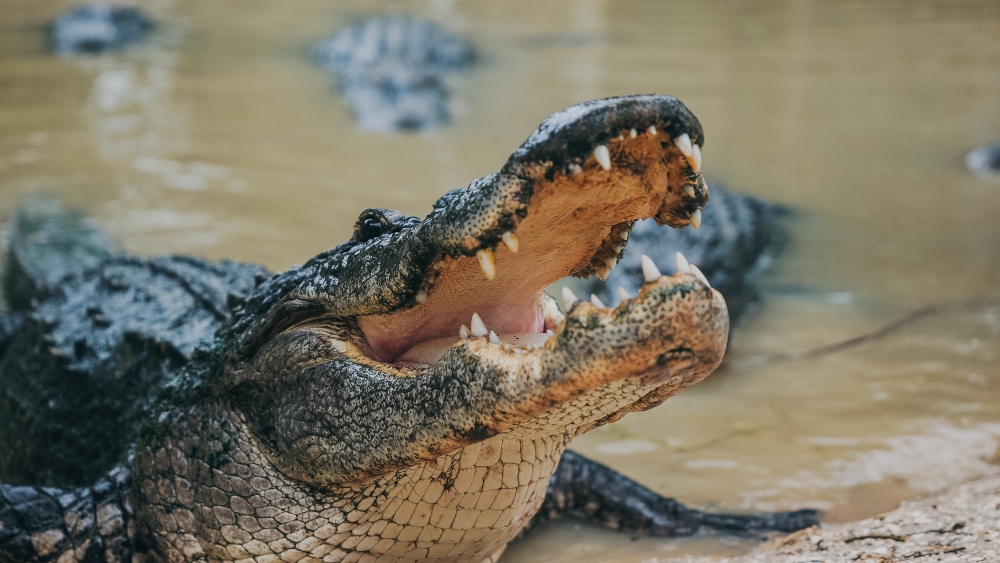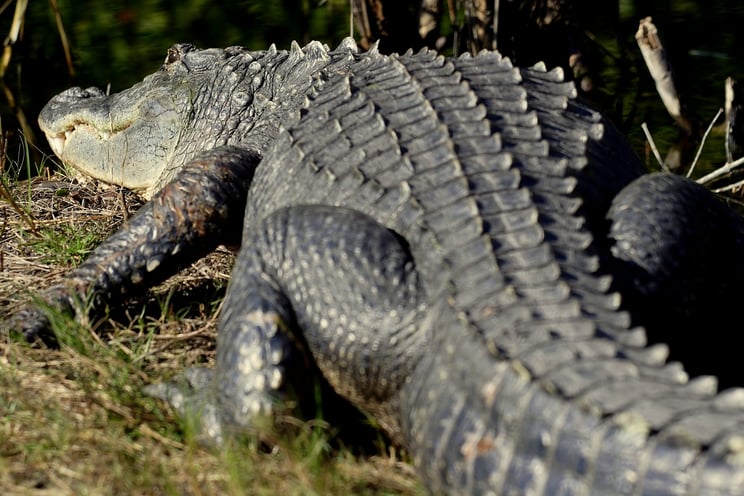While they may not rank the highest on being the cuddliest animals, alligators are certainly one of the most fascinating, dare we say… coolest animals out there. From the power behind their jaws to the agility these animals showcase in the water, it’s no surprise why tourists and locals alike are so drawn to them. Wild Florida airboat tours are certainly one of the coolest ways to view alligators, but it’s not your only option. You’ll find a Gator Pond in the heart of their Gator Park full of over 100 alligators that were either rescued or born in Wild Florida.
1. They are opportunistic hunters
Alligators hunt species that are easily accessible and abundant in the wild. While most carnivores, like lions or wolves, actively seek out their next meal, alligators will wait for the opportunity to eat. Hiding in the thick marshland, alligators in Florida will usually eat insects, amphibians, fish, snakes, turtles, and other small mammals. However, that’s not to say that they wouldn’t go after a cow if given the opportunity!
Ever heard of an alligator whisperer? Meet Andrew Biddle, Wild Florida’s official gator whisperer!

2. An alligator’s gender is determined by the temperature of its nest during incubation
A female Florida alligator lays between 35 and 90 eggs in late June to early July with the incubation period lasting for about 65 days. Covering the nests with a layer of vegetation to keep them warm, if the temperature of the nest is above 93 degrees Fahrenheit the hatchlings will all be male. And, if the nest is below 86 degrees Fahrenheit, the hatchlings will all be female. If the nest temperature is between 86 and 93 degrees Fahrenheit, then both genders could possibly hatch from the nest!
3. They are very different from crocodiles
Geographically, alligators primarily live in the southeastern United States and eastern China while crocodiles live in Africa, Australia, southeastern Asia, North America, South America, and Central America. (However, did you know that southern Florida is the only place on earth where you can find alligators and crocodiles coexisting?) Another way to tell the difference between an alligator and a crocodile is by their snouts. An alligator’s snout is broad and has a U-shape, while a crocodile’s snout is more narrow with a V-shape.
Want to learn more? Check out the 3 differences between an alligator and a crocodile!
4. Run straight away from an alligator, not zigzag
Most people say you can escape an alligator if you run in a zigzag pattern, but that’s not really true. Have you ever noticed how an alligator bites by swinging their mouth left or right? That’s because alligators are virtually blind straight in front of their nose, so running zigzag might actually help them spot you quicker.
5. An alligator’s bite is one of the strongest in the animal kingdom
Imagine an alligator chomping down on its prey with its jaws. Scary, right? In fact, biology Professor Greg Erickson from Florida State University researched more about the strength of an alligator’s bite and said, “If you were in the jaws of an alligator and trying to get out, it would be like trying to lift a pickup truck off of yourself.” American alligators rank as having the third strongest bite force in the animal kingdom, following just behind the Salt Water and Nile crocodiles.

Have you ever wondered, “Where can I see alligators in Florida?” Wild Florida is the right place, that’s for sure! Plus, if you love alligators as much as they do, check out their VIP Reptile Encounter, where you can get up close and personal to see the coolest reptiles around! Included with any airboat tour or animal encounter is admission to their Gator Park, where you can see the coolest gator in Central Florida, Crusher, in his very own show!
